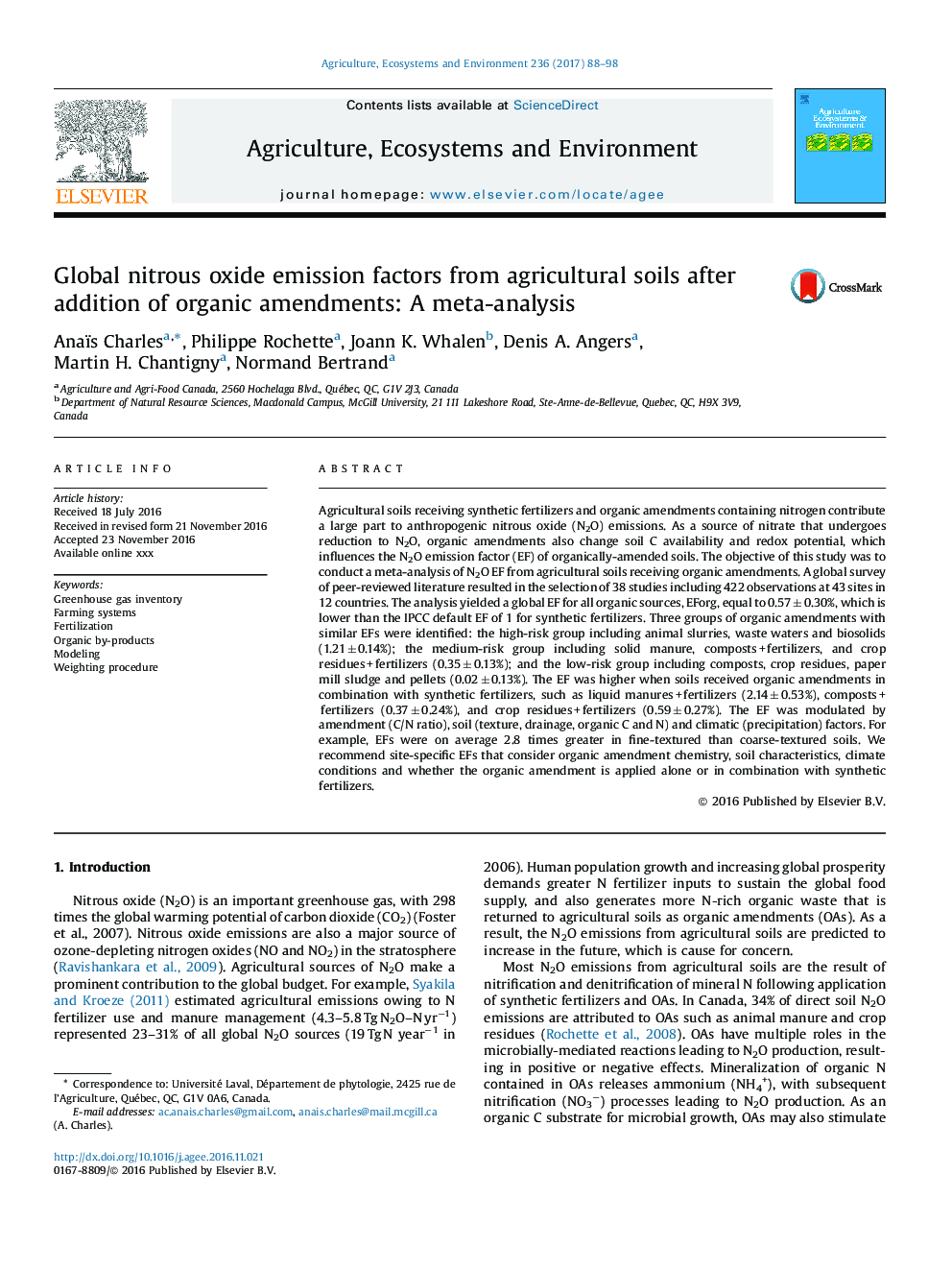| Article ID | Journal | Published Year | Pages | File Type |
|---|---|---|---|---|
| 5537879 | Agriculture, Ecosystems & Environment | 2017 | 11 Pages |
Abstract
Agricultural soils receiving synthetic fertilizers and organic amendments containing nitrogen contribute a large part to anthropogenic nitrous oxide (N2O) emissions. As a source of nitrate that undergoes reduction to N2O, organic amendments also change soil C availability and redox potential, which influences the N2O emission factor (EF) of organically-amended soils. The objective of this study was to conduct a meta-analysis of N2O EF from agricultural soils receiving organic amendments. A global survey of peer-reviewed literature resulted in the selection of 38 studies including 422 observations at 43 sites in 12 countries. The analysis yielded a global EF for all organic sources, EForg, equal to 0.57 ± 0.30%, which is lower than the IPCC default EF of 1 for synthetic fertilizers. Three groups of organic amendments with similar EFs were identified: the high-risk group including animal slurries, waste waters and biosolids (1.21 ± 0.14%); the medium-risk group including solid manure, composts + fertilizers, and crop residues + fertilizers (0.35 ± 0.13%); and the low-risk group including composts, crop residues, paper mill sludge and pellets (0.02 ± 0.13%). The EF was higher when soils received organic amendments in combination with synthetic fertilizers, such as liquid manures + fertilizers (2.14 ± 0.53%), composts + fertilizers (0.37 ± 0.24%), and crop residues + fertilizers (0.59 ± 0.27%). The EF was modulated by amendment (C/N ratio), soil (texture, drainage, organic C and N) and climatic (precipitation) factors. For example, EFs were on average 2.8 times greater in fine-textured than coarse-textured soils. We recommend site-specific EFs that consider organic amendment chemistry, soil characteristics, climate conditions and whether the organic amendment is applied alone or in combination with synthetic fertilizers.
Related Topics
Life Sciences
Agricultural and Biological Sciences
Agronomy and Crop Science
Authors
Anaïs Charles, Philippe Rochette, Joann K. Whalen, Denis A. Angers, Martin H. Chantigny, Normand Bertrand,
